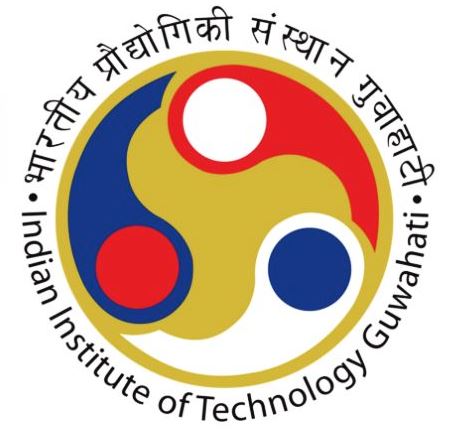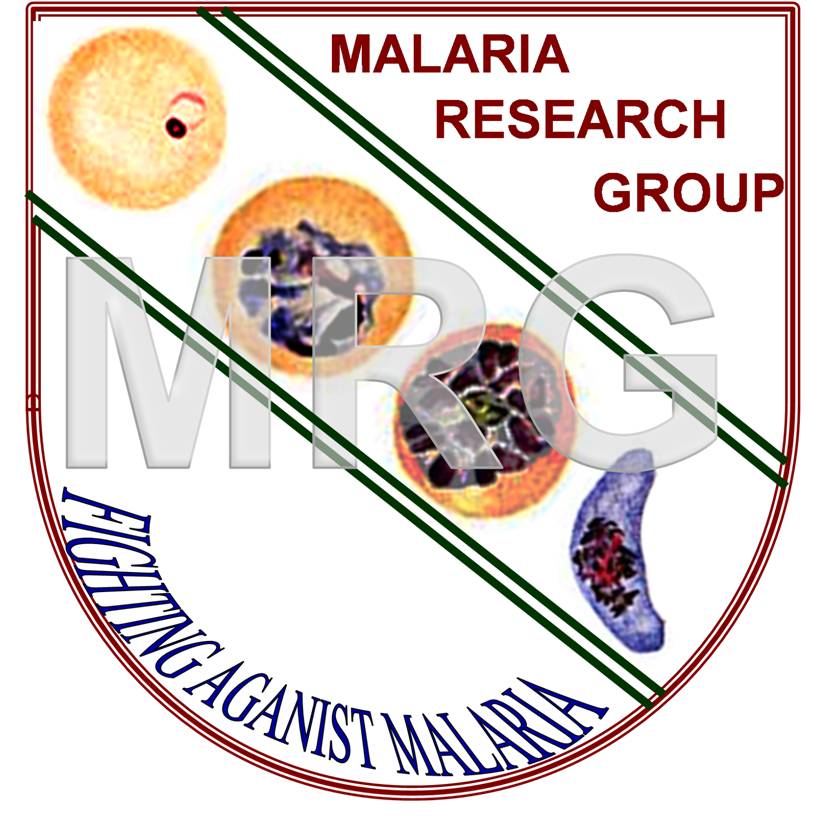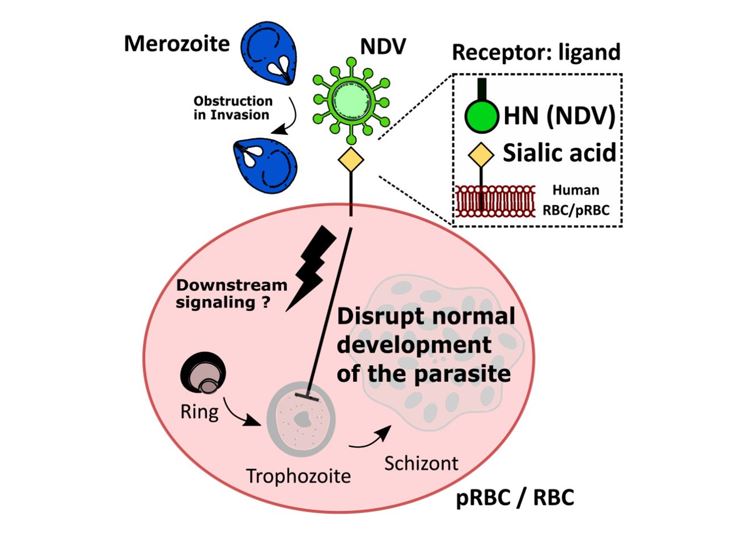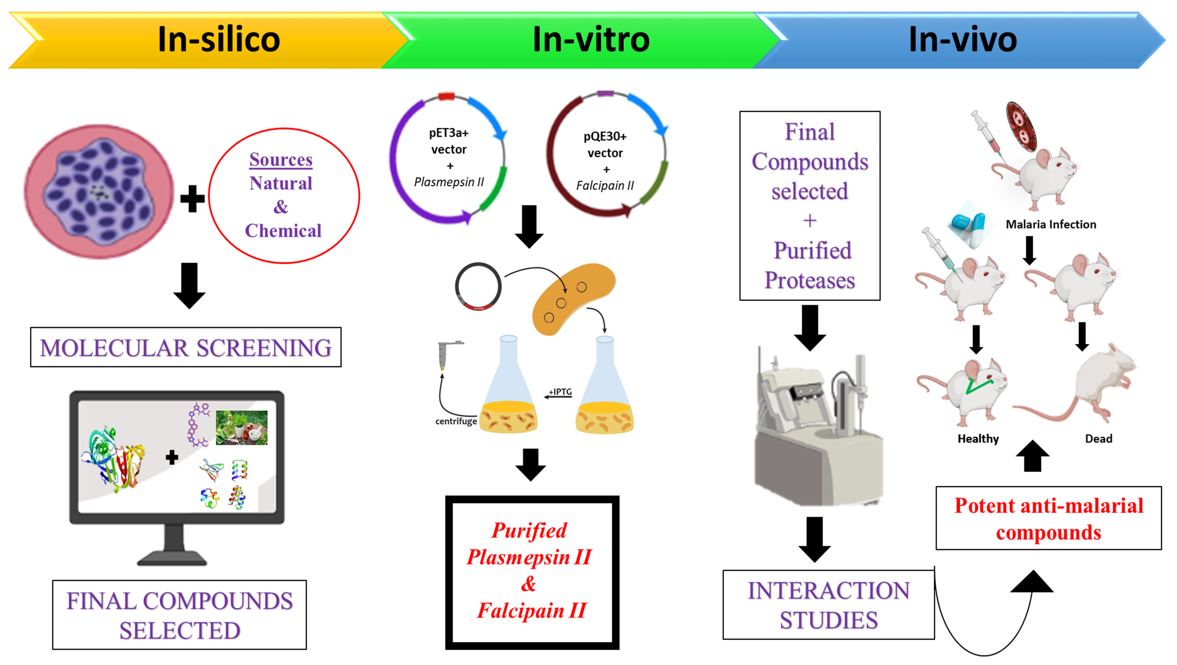Indian Institute of Technology Guwahati
 MALARIA
RESEARCH LAB
MALARIA
RESEARCH LAB

Overview
In our laboratory we have focused on the biological and molecular processes driving malaria related functional abnormalities with-in brain, liver and immune cells of the host. One of the major research programs is to understand how signaling events within infected RBC are developing senescent RBCs and making these senescent cells to cause malaria associated functional abnormalities in vital organs of the host and the immune system. Also, we are interested to characterize proteins involved in cellular signaling, hemoglobin digestion and intracellular trafficking within plasmodium falciparum.
Ongoing Research Projects
Anti-malarial Drug Discovery

Currently we have focused on two pathways in malaria parasite to design antimalarial agents; Intracellular signaling molecules such as protein kinases and Proteases. We have screened heterocyclic compound library, drug library, plant phytochemicals and molecules designed using ligand-based approach, to identify potent antimalarial agents (Eur Food Res Technol, 234: 905-911, Curr Drug Discov Technol, 10, 85-91, Med Chem Res, 22; 4737-4744, Eur J Med Chem, 70, 607-612.). The best molecules from the search are found to exhibit anti-malarial activity against plasmodium falciparum 3D7. Now we are taking these molecules and checking their activity in mice and other animal models. In addition, these molecules are serving as the first line of molecules to design potent anti-malarial agents.
Regulation of Innate Immune Response

Phagocytic cells such as monocytes,macrophages and neutrophils plays a crucial role in innate immune response and all are involved in phagocytosis of IRBCs. Macrophage often use pattern recognition receptors, including Scavenger receptor to recognize as well as phagocytose invading microbes. Out of them CD36,plays a pivotal role in non-opsonic phagocytosis of P.falciparum infected RBCs. Here our current focus is to understand the crucial signaling mechanism behind CD36 desregulation and its impact on cytokine secretion during malaria.
Designing immunostimulatory and Anticancer agents

Protein kinase C is a family of serine/threonine kinases that plays a central role in cellular signal transduction in mammalian physiology such as growth, differentiation, tumor promotion and apoptosis. Diacylglycerols(DAGs) serve as endogenous ligands in healthy cells. The PKC isozymes have important roles in tumor biology. Elevated levels of PKC are seen in proliferative cancer cells compared to healthy cells like immune cells. Recent studies suggest that PKC signaling is crucial for immune-activation of neutrophils and lymphocytes. Our goal is to discover new lead molecules for a new generation of chemotherapeutic drugs that act via activation of PKC isozymes in healthy immune cells leading their activation to induce proper immune response. In addition, these molecules may activate PKC in cancer cells leading to their apoptosis. Also we would want to have a picture of the various possible apoptotic signaling pathways activated by such agonist molecules by interaction with their respective PKC isozymes in cancer cells
Viruses and their proteome for novel therapeutics against malaria

The development of resistance to existing antimalarial drugs poses a significant challenge, necessitating the exploration of novel therapeutic strategies. Viruses and Virus-Like Particles (VLPs) have shown potential as effective agents in various diseases. However, their direct application for targeting the malaria parasite remains unexplored. In our lab, we investigate the interaction between the Newcastle Disease Virus (NDV or ND virus) and the malaria parasite during the erythrocytic cycle. We currently focus on employing the surface proteins of the virus to disrupt the blood stages and also explore the possible strategies to use these proteins for targeted delivery of various antimalarial drugs directly into the malaria parasite.
CD36 mediated cell-signaling events during inflammation in NAFLD

Liver plays a vital role in detoxifying potentially harmful chemicals that find entry into the body via various routes. Metabolic disturbances induced by toxic chemicals, pathogenic molecules, including some therapeutic drugs and a high-fat diet, interfere in the normal functioning of liver and make it vulnerable to a chronic liver disease called nonalcoholic fatty liver disease (NAFLD). About 30% of the world population is suffering from the disease, with Asia having a prevalence of 27%. NAFLD is characterized by cytoplasmic deposition of triglycerides in liver cells. This initial stage of steatosis may progresses to oxidative stress, inflammation and apoptosis in liver tissue which may eventually turn into liver carcinoma. Factors and events that leads to development of inflammation in NAFLD is poorly understood. Our main objective is to study the role of CD36, a class B scavenger receptor in inflammation during the disease and decipher the downstream signaling events.
Exploring Proteases for anti-malarial drug discovery

In the malaria parasite, proteases are known to carry out obligatory functions during the several stages of the life-cycle. One of the crucial roles of the proteases is to enable the parasite in digesting the host hemoglobin during its erythrocytic stages. Proteases involved in hemoglobin digestion are Aspartic proteases, Plasmepsin (I-IV) which breaks down the hemoglobin into large peptides. Cysteine proteases like Falcipain 2, 2’, 3 and Metalloproteases including Falcilysin are involved in downstream processing of the large peptides into smaller oligopeptides of different sizes. We aim to explore potent and highly selective inhibitors in order to perturb the action of these proteases, while screening for novel phytochemicals from the herbal spices, drug-repurposing from FDA approved data banks and small peptides, synthesized or natural in origin. It is therefore possible to use the recently discovered knowledge in an innovative way to create new malaria-fighting medications.